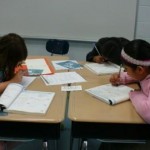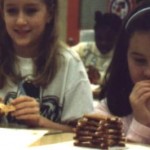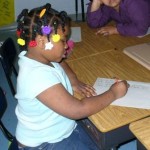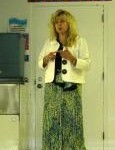“Creative thinking may mean simply the realization that there’s no particular virtue in doing things the way they always have been done.” -Rudolf Flesch
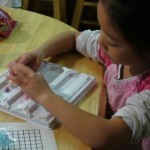
Today’s Inspiration Blog is also an Activity Blog. If you continue reading you’ll understand why…
Friday was an early release day for all three of my children, so I decided to make Glenna Tabor, educational consultant, take the day off. Glenna Tabor, a.k.a. Mommy, had great adventures with her children all day! We had a $25 gift card to spend at a bookstore, so computational proficiency was being used. Higher-order thinking, such as evaluation, was also being exercised by all three as they determined which item was worth the price. After shopping, we went for a snack at our favorite restaurant. No mathematical calculations needed there. We know it’s a bargain—all the chips and salsa you can eat with at least 2 ice cream cones for dessert!
As we were resting that evening, we were petting our Heinz 57 dog. I had begun calling him “Poochie Poo” for the last week or so. I’m not really sure why he needed that name, but I like the alliteration. I decided that we should shorten it to P Squared. This shortening of names brought about the most incredible mathematical hour with my 4th grader.
My 9-year-old asked me why I was calling our dog P-Squared. I told her that “Poochie Poo” began with two P’s which was P times P or P squared. She put her hands on her hips and answered, “Mommy, I’m only in 4th grade and we haven’t studied squared yet. Can you show me?”
For me, her request was a rare one. I don’t know how many fellow educators experience this phenomenon, but our middle child doesn’t enjoy me teaching her anything. She knows I’m a teacher, but she’d much rather I not teach her.
We immediately pulled out rainbow centimeter cubes and centimeter grid paper. (If you don’t have those items, sugar cubes and any kind of paper will do.) I asked her to make me an array that was 3 by 3. She arranged the 9 cubes on the grid paper.
I asked her what geometric shape the 3 by 3 array looked like. She answered that it looked like a square. I asked her if she wanted to make another array out of “a number by the same number.” Being my diverse, hard to keep engaged learner, she said, “No, thanks.” That’s when I offered her the “magical math tool” (better known as needle-nose pliers) to use to make her new arrays. As it always did with every reluctant learner, she wanted to use the magical math tool. She busily set about creating two more arrays- a 2 by 2 and a 4 by 4. Each time she was able to observe that the array made a square.
As she worked, I wrote each of the equations on a sheet of paper and explained that the 2 at the top right was the symbol for “squared.” I asked her why she thought mathematicians called it that. Immediately, her eyes lit up and she shouted out, “It’s because it’s makes a square!”
I asked her what she thought would happen if we squared the number 6, 7, or 8. She wrote the equations on her paper and told me the answer. We even talked about square roots…but that exploration will have to come another night.
Not one to pass up the opportunity to differentiate based upon interest and her recently increased readiness for the concept of squared numbers; I asked her if she’d like to build a cubed number. Of course she wanted to, but only if she could use the magical math tool.
For the next 30 minutes she worked on building a 2 by 2 by 2 cube, 3 by 3 by 3 cube, and a 4 by 4 by 4 cube. I tried helping her keep the rainbow cubes straight after the first arrangement fell apart, but she didn’t want the assistance. She told me that she wouldn’t discover it on her own if I did it for her. How right she was! She created cubes, drew what she had created, and wrote the equations. She went from concrete-to-representational-to-abstract.
How did the learning session end? The abstractions were made; she could tell me what squaring and cubing a number meant. Then she began to clean up the cubes–that had spilled all over the floor. She spent the next 15 minutes picking them up with her magic mathematical tool—while “Poochie Poo” tried to eat them.
I will treasure that hour forever! The most reluctant learner in my house let me help her “turn on her math light.” I know she wouldn’t have done it if I had given her a brief explanation, written an example on a sheet of paper, and then handed her a workbook page to complete. I got her attention because I:
- Connected the new mathematical concept to her world…her dog;
- Used a concrete manipulation of objects to help her understand an abstract concept;
- and, made the task of high interest by letting her use needle nose pliers to move the cubes.
My daughter is one of the students I keep in mind every time I encourage others to differentiate instruction in mathematics. She’s one of the reasons why I believe in systematically structuring meaningful mathematical learning experiences for all students. So many of our students need to be engaged, to be connected to the information, and to have fun while they are learning-Tabor Rotation does all of that!
Side note- The next morning I found a sheet of paper with some equations written on them. Next to it were three bags that were filled evenly with cubes and two left over. On her own volition, she had counted organized the cubes mathematically. Amazing! Problem-solving strategies are used when a learner encounters a real problem!
“There is no doubt that creativity is the most important human resource of all. Without creativity, there would be no progress, and we would be forever repeating the same patterns.” -Edward de Bono




